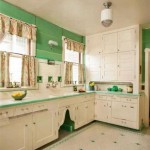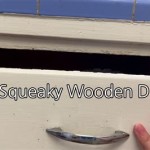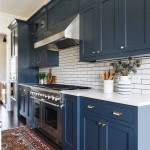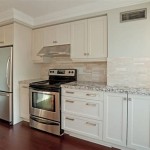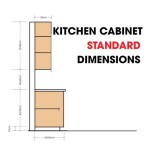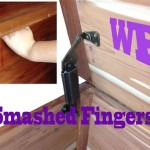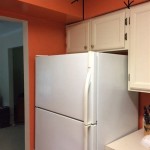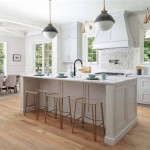Is It Worth Painting Kitchen Cabinets? A Comprehensive Analysis
The decision of whether or not to paint kitchen cabinets is a common dilemma for homeowners seeking to refresh their living spaces. It presents a potentially cost-effective alternative to a full kitchen renovation, offering the chance to modernize the aesthetic without incurring the substantial expense of replacing cabinetry. However, the undertaking involves careful consideration of various factors, including the existing condition of the cabinets, the desired aesthetic outcome, budget constraints, and the homeowner's skill level (or willingness to hire a professional). Examining these elements will help determine if painting kitchen cabinets is a worthwhile investment.
Painting kitchen cabinets can dramatically alter the visual appeal of a kitchen. Dated wood finishes can be replaced with contemporary colors, brighter hues can enliven a dull space, and the overall style can be updated to align with current trends. This transformation can improve the enjoyment of the kitchen space and potentially increase the home's resale value. However, the success of the project hinges on proper preparation, execution, and the selection of appropriate materials.
Conversely, poorly executed painting can detract from the kitchen's appearance, resulting in a less desirable and potentially more costly outcome. Chipped paint, uneven coverage, and visible brush strokes can significantly damage the aesthetics of the space. Therefore, assessing the feasibility of the project and understanding the associated risks is crucial before embarking on the painting process.
Assessing the Condition of Existing Cabinets
The existing condition of the kitchen cabinets is the primary determinant of whether painting is a viable option. Cabinets that are structurally sound – meaning they are not warped, water-damaged, or significantly deteriorated – are generally good candidates for painting. Inspecting the cabinet doors, frames, and interiors for signs of damage is essential. Look for issues such as:
- Delamination: Where the surface veneer is peeling away from the underlying material.
- Water damage: Evidenced by swelling, discoloration, or soft spots.
- Warping: Distorted or bowed panels that prevent proper closure.
- Loose hinges or hardware: Which can indicate weakened cabinet structures.
- Extensive damage from insects or pests.
If the cabinets exhibit significant structural problems, painting them may be a temporary fix that fails to address the underlying issues. In such cases, replacing the cabinets may be a more prudent long-term investment. Attempting to paint over structural damage can exacerbate the problem, leading to further deterioration and potentially requiring complete cabinet replacement in the near future.
However, cabinets with minor surface imperfections, such as small scratches or dents, can typically be successfully painted after proper preparation. Filling these imperfections with wood filler and sanding the surface smooth will create a suitable base for the new paint finish. The ability to adequately prepare the surface is a critical factor in achieving a professional-looking result.
The material of the cabinets also impacts the suitability for painting. Solid wood cabinets are generally the easiest to paint and offer the best results. Laminate or thermofoil cabinets can be more challenging, requiring specialized primers and paints designed to adhere to these slick surfaces. The preparation process for laminate cabinets is also more involved, often requiring thorough degreasing and sanding to create a textured surface that promotes paint adhesion.
Budgetary Considerations: Painting vs. Replacement
The cost of painting kitchen cabinets versus replacing them is another important consideration. Painting is typically a more budget-friendly option, especially if the homeowner is willing to undertake the project themselves. However, the cost can vary significantly depending on the size of the kitchen, the type of paint and materials used, and whether professional help is enlisted.
The primary costs associated with painting kitchen cabinets include:
- Paint: High-quality cabinet-grade paint is recommended for durability and longevity.
- Primer: A specialized primer is essential for proper adhesion and to prevent bleed-through from the existing finish.
- Supplies: Includes items such as sandpaper, brushes, rollers, drop cloths, painter's tape, wood filler, and cleaning solutions.
- Labor: If hiring a professional painter, labor costs can significantly increase the overall expense.
Replacing kitchen cabinets, on the other hand, is a considerably more expensive undertaking. The cost of new cabinets can range from several thousand dollars to tens of thousands, depending on the quality, style, and materials chosen. Installation costs also need to be factored in, as well as potential expenses for plumbing or electrical work if the new cabinets require modifications to these systems.
In addition to the immediate costs, it is important to consider the long-term value of each option. While painting cabinets can provide an immediate aesthetic upgrade, new cabinets may offer enhanced functionality, improved storage solutions, and a more durable finish. The decision should be based on a thorough assessment of the budget, the desired outcome, and the long-term goals for the kitchen.
Consider the return on investment (ROI) of each option. While painting cabinets offers a quicker and less expensive update, the value added to the home may not be as significant as replacing the cabinets with high-quality, modern alternatives. If the intention is to sell the home in the near future, replacing the cabinets may be a more strategic investment.
DIY vs. Professional Painting: Assessing Skill and Time Commitment
The decision to paint kitchen cabinets as a do-it-yourself (DIY) project or to hire a professional painter is a critical one. DIY painting can save money on labor costs, but it requires significant time, effort, and skill. Achieving a professional-looking finish requires meticulous preparation, careful application techniques, and attention to detail.
Before embarking on a DIY painting project, it is important to honestly assess one's skill level and time commitment. The painting process involves several steps, including:
- Removing cabinet doors and hardware.
- Thoroughly cleaning and degreasing the cabinets.
- Sanding the surfaces to create a textured base for paint adhesion.
- Filling any imperfections with wood filler.
- Applying multiple coats of primer and paint, allowing sufficient drying time between each coat.
- Reinstalling the hardware and cabinet doors.
Each of these steps requires specific techniques and attention to detail. Rushing the process or skipping steps can result in a subpar finish. Moreover, painting kitchen cabinets can be a time-consuming project, especially for individuals with busy schedules. Completing the project can take several days or even weeks, depending on the size of the kitchen and the number of cabinets involved.
Hiring a professional painter offers several advantages. Professional painters have the experience, expertise, and equipment to achieve a high-quality, durable finish. They can also complete the project more quickly and efficiently than a DIYer. While professional painting services come at a higher cost, they can save time and effort and ensure a professional-looking result.
When selecting a professional painter, it is important to obtain multiple quotes, check references, and review their portfolio of previous work. Ensure that the painter is experienced in painting cabinets and uses high-quality materials and techniques. A reputable painter will also provide a warranty or guarantee on their work.
Consider the overall benefit. While the initial cost may seem higher for professional services, the longevity and quality of the work can lead to greater value in the long run. A properly painted kitchen, done by a professional, will withstand wear and tear better and maintain its aesthetic appeal for a longer duration of time.
Ultimately, the decision of whether to paint kitchen cabinets is a multifaceted one that requires careful consideration of various factors. By assessing the condition of the cabinets, considering the budget, and evaluating the skill level and time commitment required, homeowners can make an informed decision that aligns with their needs and goals. Successfully executed painting can transform a kitchen, enhancing its beauty and value. However, a thorough understanding of the challenges and potential pitfalls is essential to ensure a positive outcome.

Pros And Cons Of Painting Kitchen Cabinets In Tucson

Painted Kitchen Cabinets One Year Later The Palette Muse

How To Paint Kitchen Cabinets Without Sanding Or Priming

How To Paint Kitchen Cabinets Forbes Home

How To Paint Kitchen Cabinets In 7 Simple Steps

My Painted Cabinets Two Years Later The Good Bad Ugly

My Painted Kitchen Cabinets 5 Years Later An Honest Review

Avoid These Mistakes How To Paint Cabinets That Are Already Painted Grace In My Space

How To Prep And Paint Kitchen Cabinets Lowe S

How To Paint Kitchen Cabinets A Step By Guide Confessions Of Serial Do It Yourselfer
Related Posts

